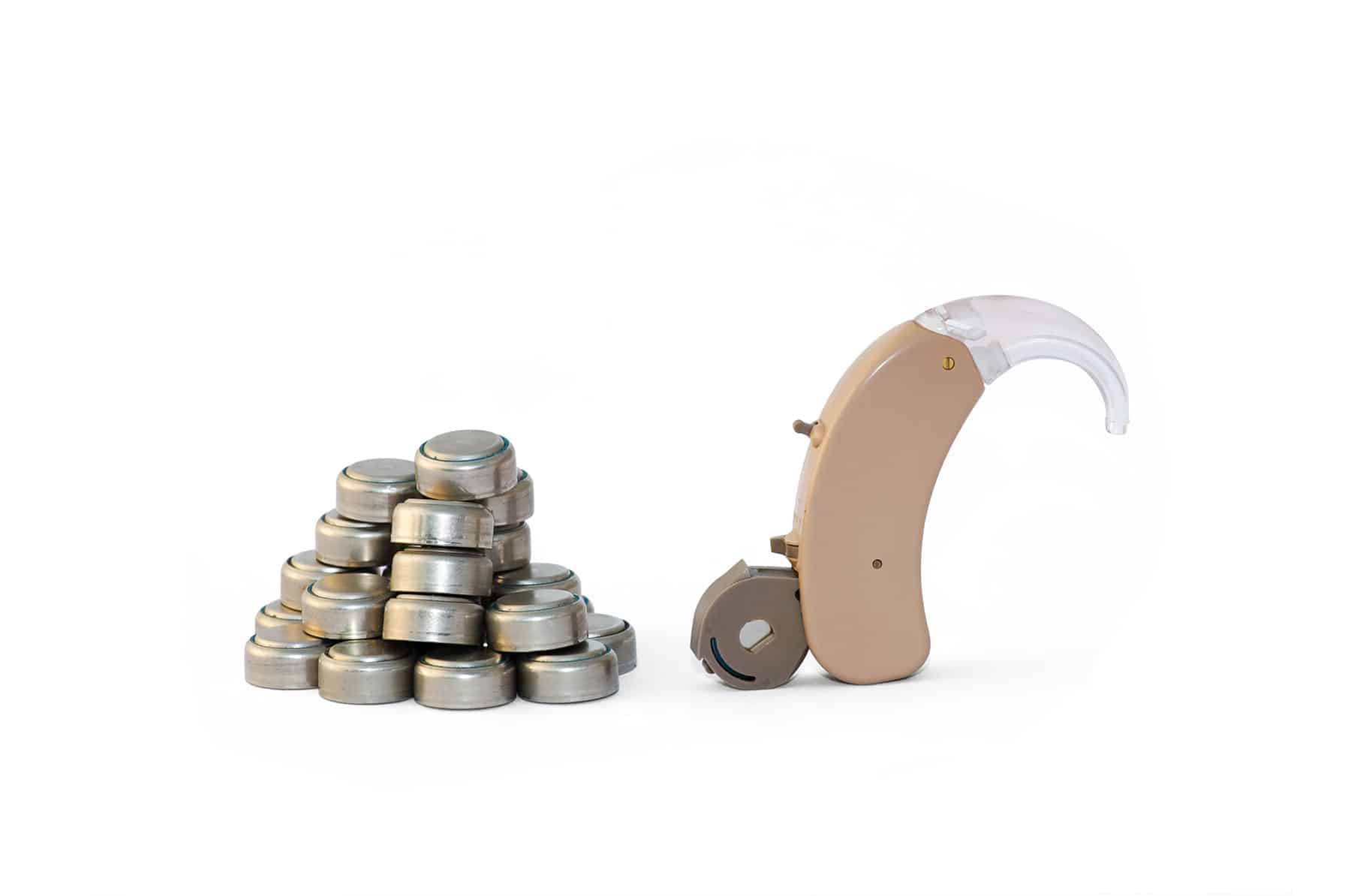Cochlear Implant vs Hearing Aid: Battery Life

If you’ve used hearing aids, you might be used to getting a week or more of hearing with just one battery. But cochlear implant battery life is lots shorter. So why do cochlear implant systems use up batteries faster? Basically, it’s because a cochlear implant system uses much more power than a simple hearing aid. Here’s what that power gets you:
High-Tech Signal Processing
Signal processing is how a hearing aid or a cochlear implant turns sound waves into a signal that the user can understand as sound. A cochlear implant is all about signal processing, as it has to convert sound vibrations into electrical pulses that stimulate the cochlea
A hearing aid doesn’t need to do much signal processing. It just amplifies mechanical sound waves in a pretty simple “in-and-out” process that starts with a speaker and ends with a speaker. The first speaker, a microphone, picks up sounds which are then amplified and played into the ear via the second speaker. This only amplifies sound from the outside and leaves it up to the ear to receive and transmit this sound to the brain.
On the other hand, a cochlear implant has to convert sound vibrations into electrical pulses that stimulate the cochlea. Because of this, a cochlear implant’s audio processor has to do a lot more thinking. It’s like having a personal interpreter who translates from another language to one you understand. A hearing aid on the other hand is like someone who repeats what another said in your own language.
There are two different parts of the cochlear implant system that process sounds: the external audio processor and the internal cochlear implant.
First, the audio processor detects sounds with its microphones. Then it analyzes and adjusts the sound levels for best quality, before dividing them up into different signals for each of the pitches of sound. These coded signals are then sent wirelessly through the skin to the implant.
The implant decodes these signals and uses them to send stimulation pulses to the cochlea. This whole process, from the audio processor’s microphone all the way to the cochlea, happens in only a few milliseconds.
Signal Transmission
Like we mentioned, the audio processor has to send signals wirelessly to the implant through the skin. That’s another major factor in cochlear implant battery life.
The audio processor and implant aren’t directly connected. Instead, they use special radio signals to create a wireless connection between the audio processor coil and the implant. That signal has to travel through a few millimeters of skin in between the audio processor coil and implant.
When the signal is sent wirelessly, some of that energy is absorbed by the skin. That’s why the thickness of the skin between the coil and the implant directly affects how efficient the whole cochlear implant system is. In fact, right now only about 50% of the transmission power makes it to the implant. But don’t worry, this reduced efficiency is a natural part of wireless energy transfer and it’s something that affects all modern cochlear implants.
Electric Stimulation
The implant’s electrode array uses electrical pulses to stimulate the cochlea. The pulses are what create sound perception, so when more sound information is sent to the electrode arrays more power is needed by the implant.
In a MED-EL cochlear implant, up to 50,704 electrical pulses can be sent to the electrode array in the cochlea every second! These pulses can be sent to multiple electrodes at once and are used to stimulate sounds as low as 70 Hz and as high as 8,000 Hz. That’s a lot of sound information, so it needs plenty of power.
If you’re currently using a hearing aid but are curious about cochlear implants, we’ve got lots of information on the MED-EL website. Or you could just contact your local MED-EL representative to talk with someone in person!
And if you’re new to cochlear implants but would like to learn more about batteries, here’s an article that can help you to learn about the different types of cochlear implant batteries like zinc-air or rechargeables.
Thanks for your message. We will reply as soon as possible.
Send us a message
Field is required
John Doe
Field is required
name@mail.com
Field is required
What do you think?
Kristina rounsaville
February 20, 2024
Thank you for the explanation. Please share our voice of frustration and sadness with Med El. Purchasing out of pocket is not an option for all families and adds another hardship on families and barrier for hearing access for many individuals. I’ve never heard of Medicaid reimbursing for expenses. This is quite a hardship placed on families. The option to receive batteries via MedEl was one of the factors in deciding to go with MedEl. Do you have a contact name, telephone number and email for the representative for Medicaid that handles battery authorization? Thank you for information have a good evening. Do not apologize, unless you have had surgery on your HEAD twice for cochlear implants and, where then told, after surgery you do not get batteries from The company that promised you a lifetime of batteries. I mean, please go tell me 7 year old to his face he can’t have batteries. It’s sickening.
MED-EL
February 22, 2024
Hi Kristina, thank you for your message. We forwarded it to your local MED-EL representative. Please let us know if you have any further questions. Kind regards, Gordana



Conversation
1 Comment